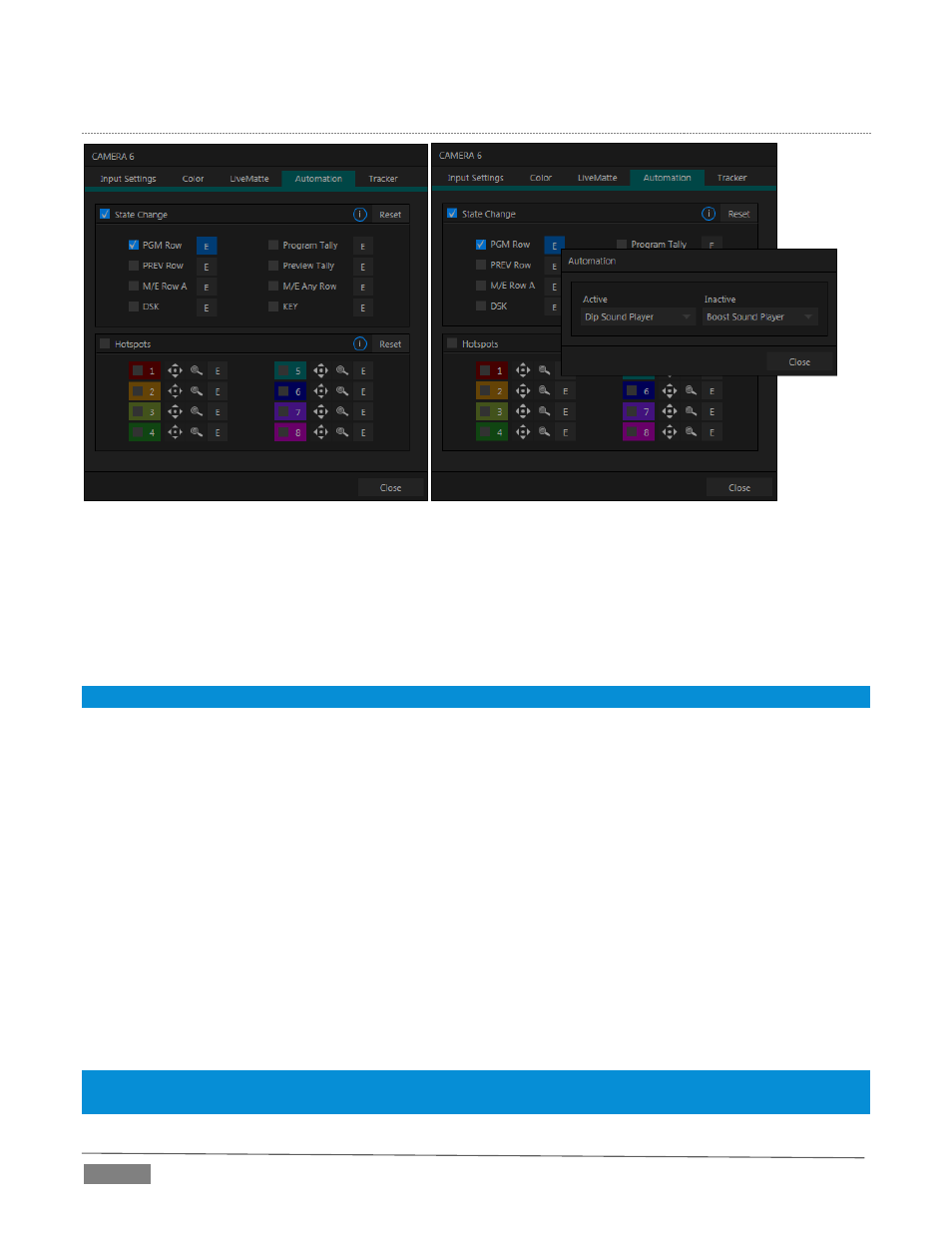NewTek TriCaster Advanced Edition User Guide User Manual
Page 96

Page | 84
S
TATE
C
HANGE
FIGURE 77
Click the [E] button next to a ‘state’ (see Figure 77) to assign macros that will be executed on specific Switcher
operations that affect the specified state.
For example, the accompanying images depict macros that control the volume level of TriCaster’s SOUND
player. Whenever Camera 6 is newly selected on the Switcher’s PGM row, the Active macro will run.
Conversely, replacing Camera 6 with a different PGM row selection will execute the Inactive macro.
Hint: The “E” on the button is short for “Event”.
The State Change implementation thus allows you to automate all manner of operations based on such things
as the following:
Program or Preview row selection
Displaying/ hiding the source in a DSK or KEY channel
Selecting/de-selecting it on an M/E’s A row, or any M/E row, or …
Showing or hiding a source on the Program or Preview output.
This is immensely powerful, and lends itself to all endless applications, such as (to suggest just a few):
Automatically fly in a title as you switch to remote sources, and remove it after a specified time.
Or automatically select a different Audio Mixer preset when you switch from viewing a source in the
B monitor of a virtual set on Program to displaying it full-screen
And then change back to the original audio setup when you switch back to the anchor desk.
The possibilities are truly endless.
Hint: More coverage of both Macros and the larger topic of Automation can be found in the accompanying
Automation and Integration Guide.